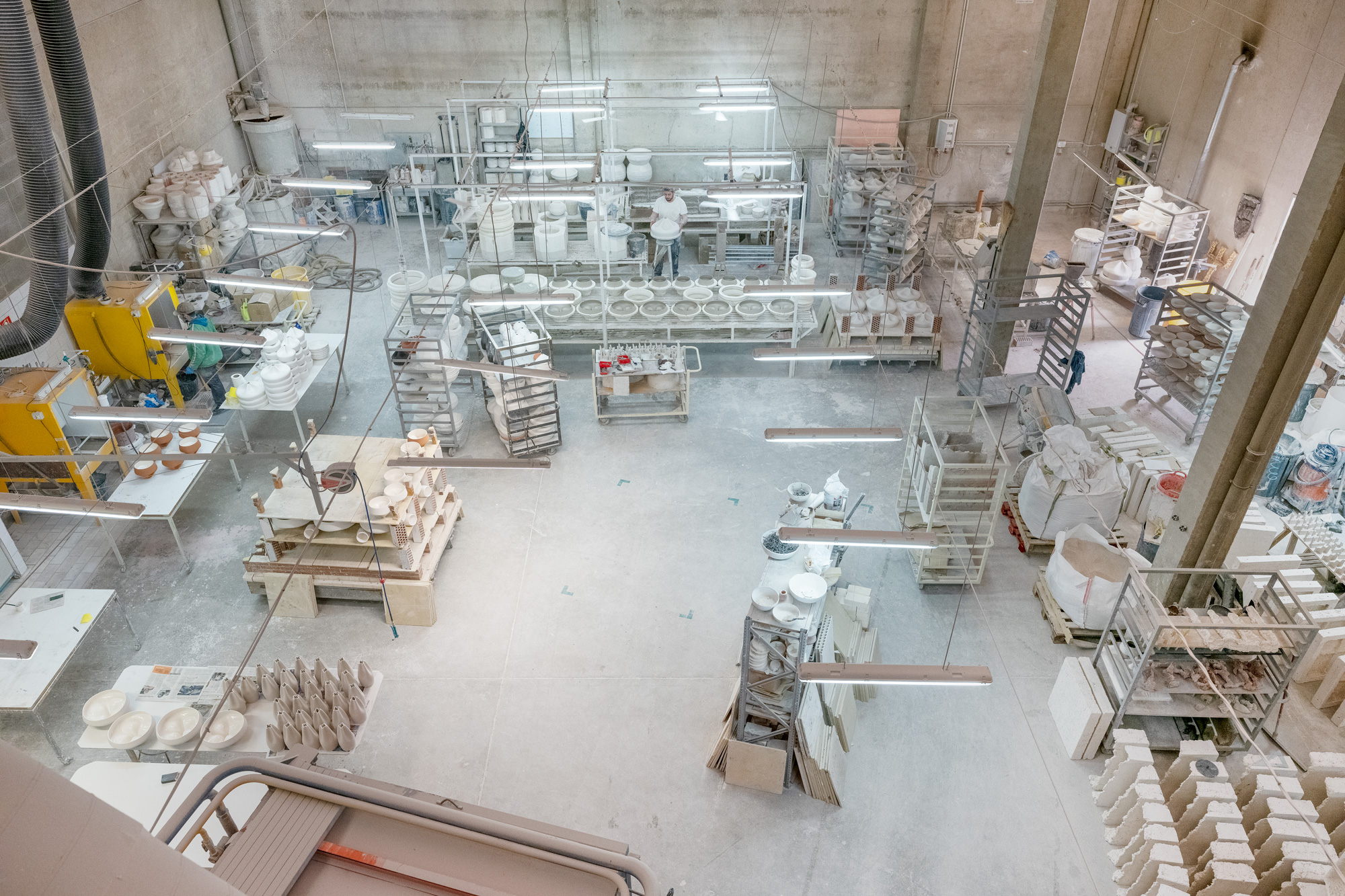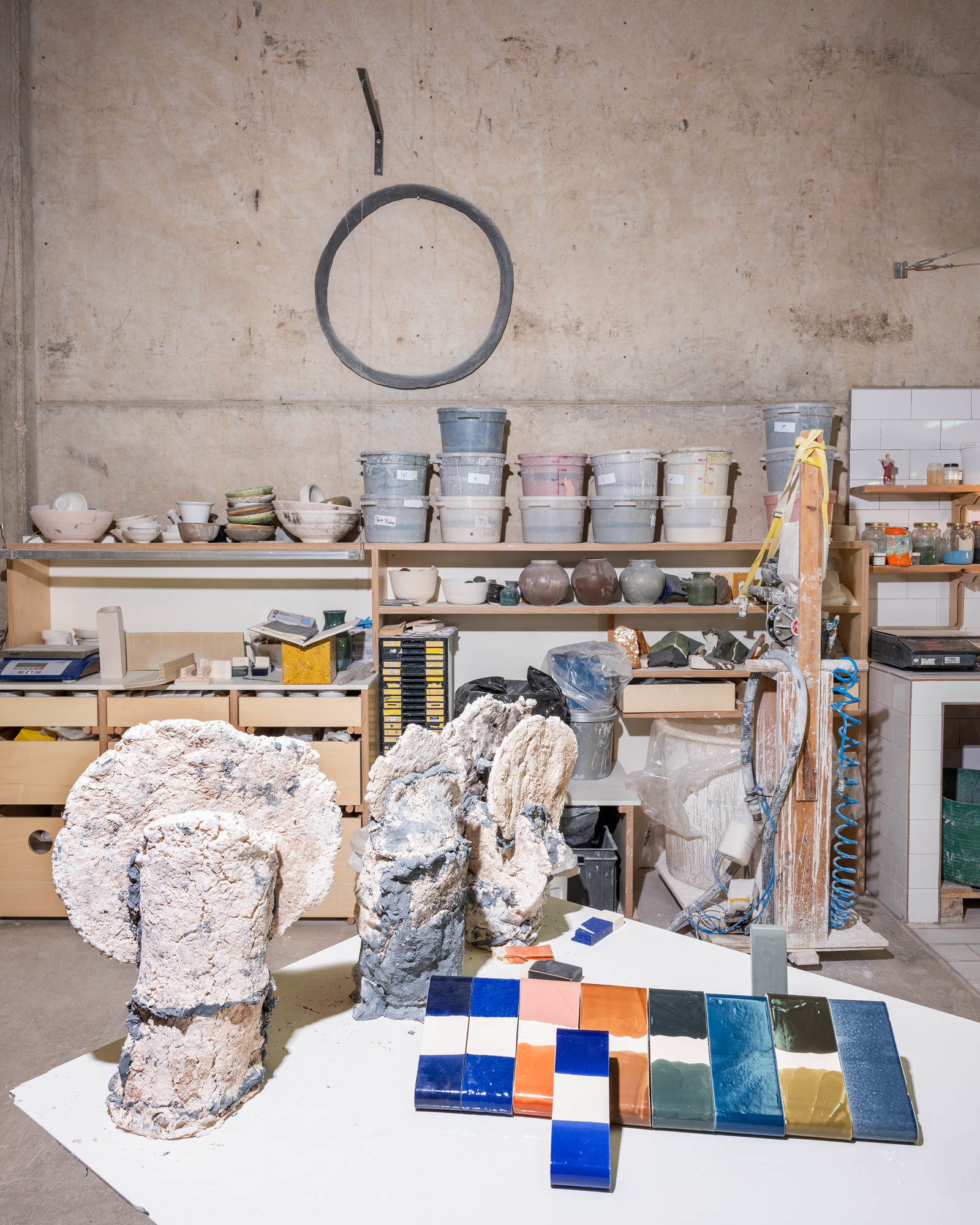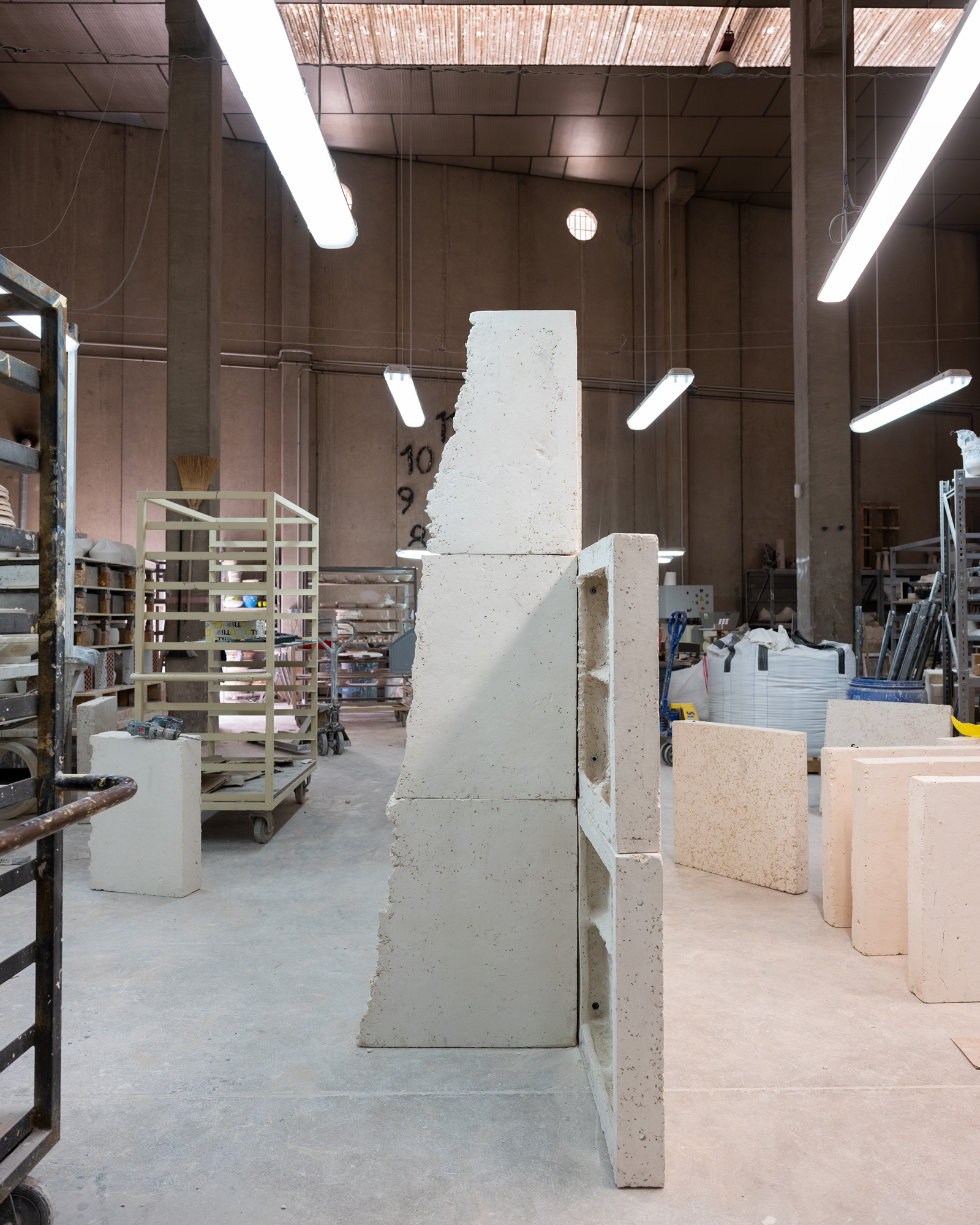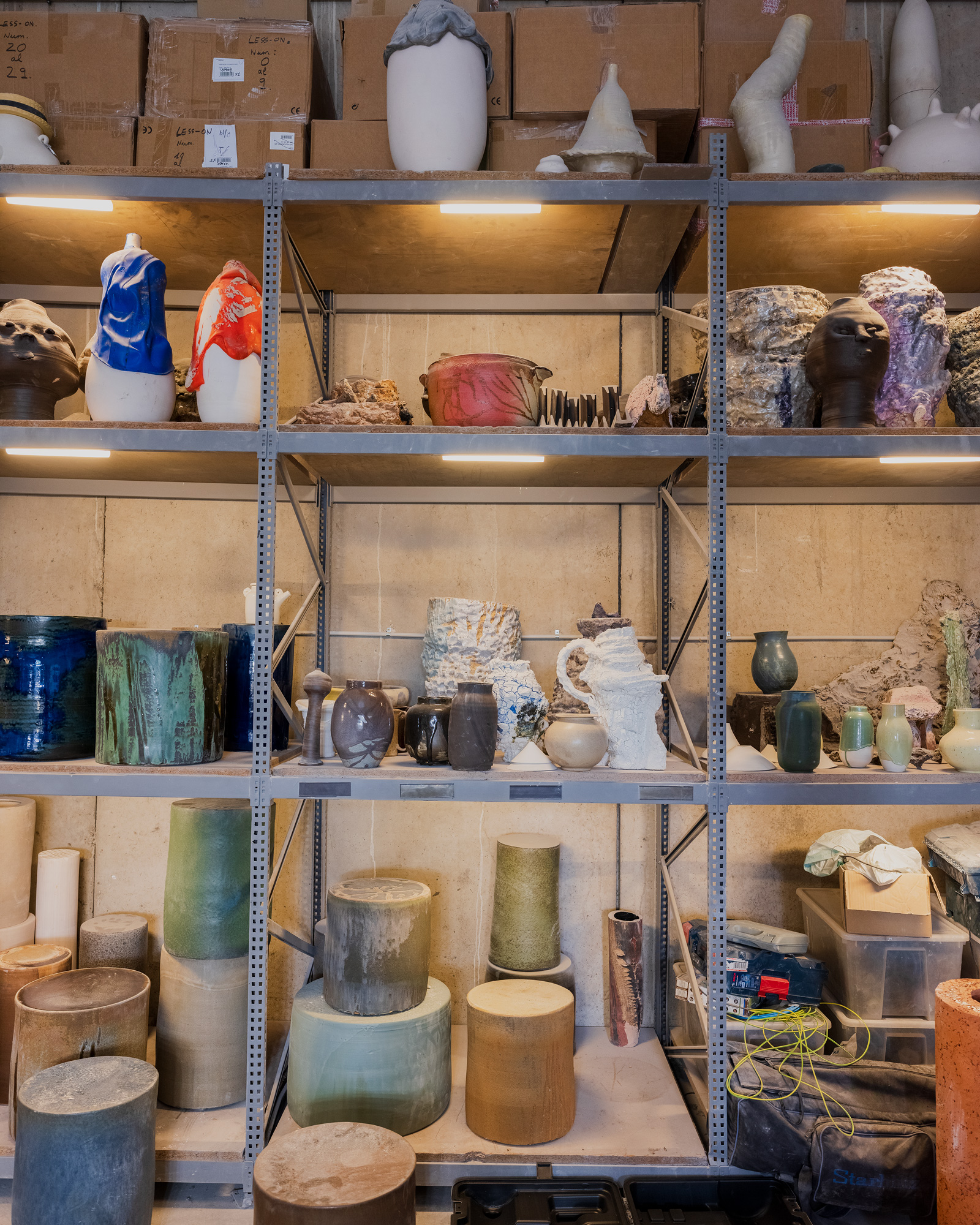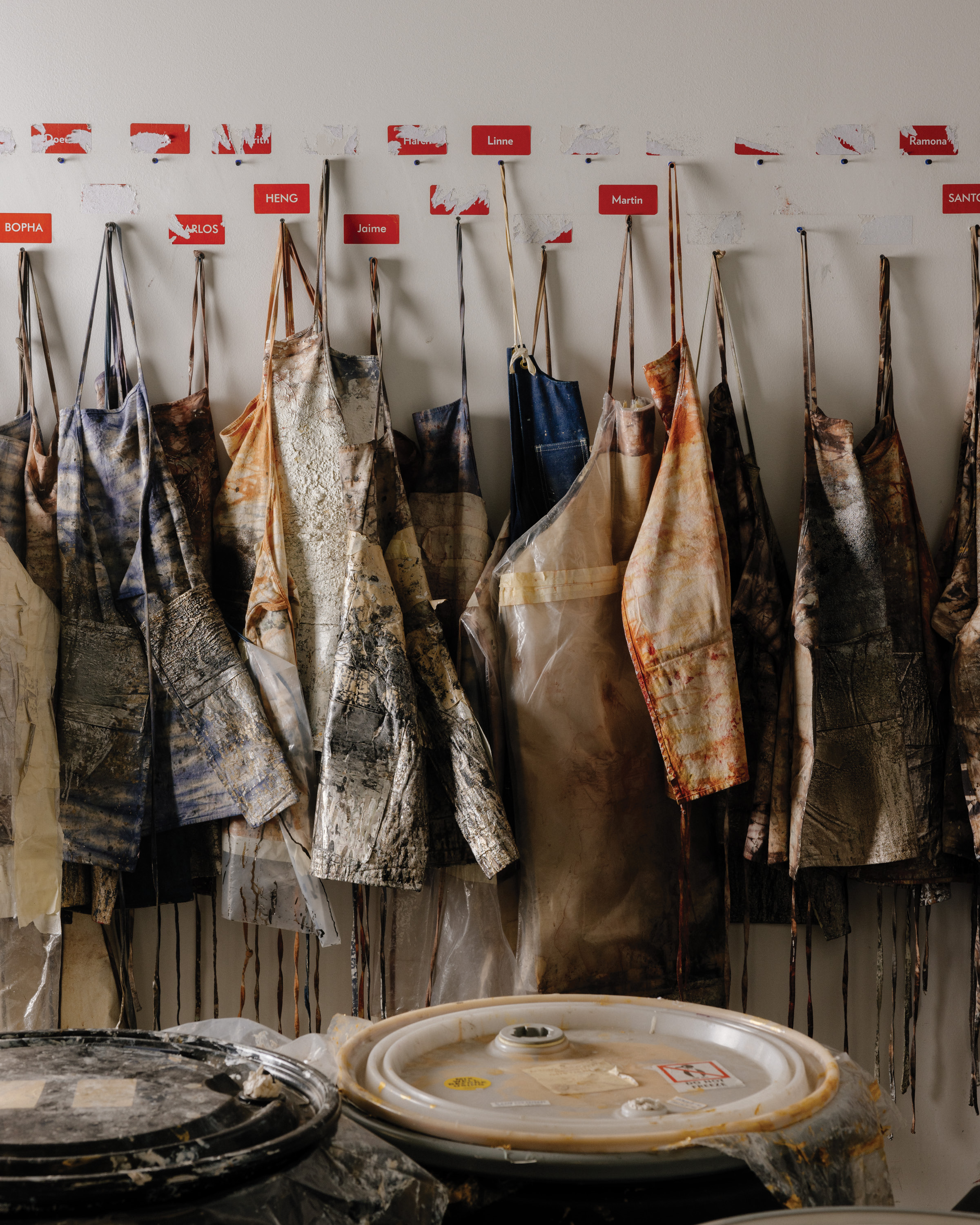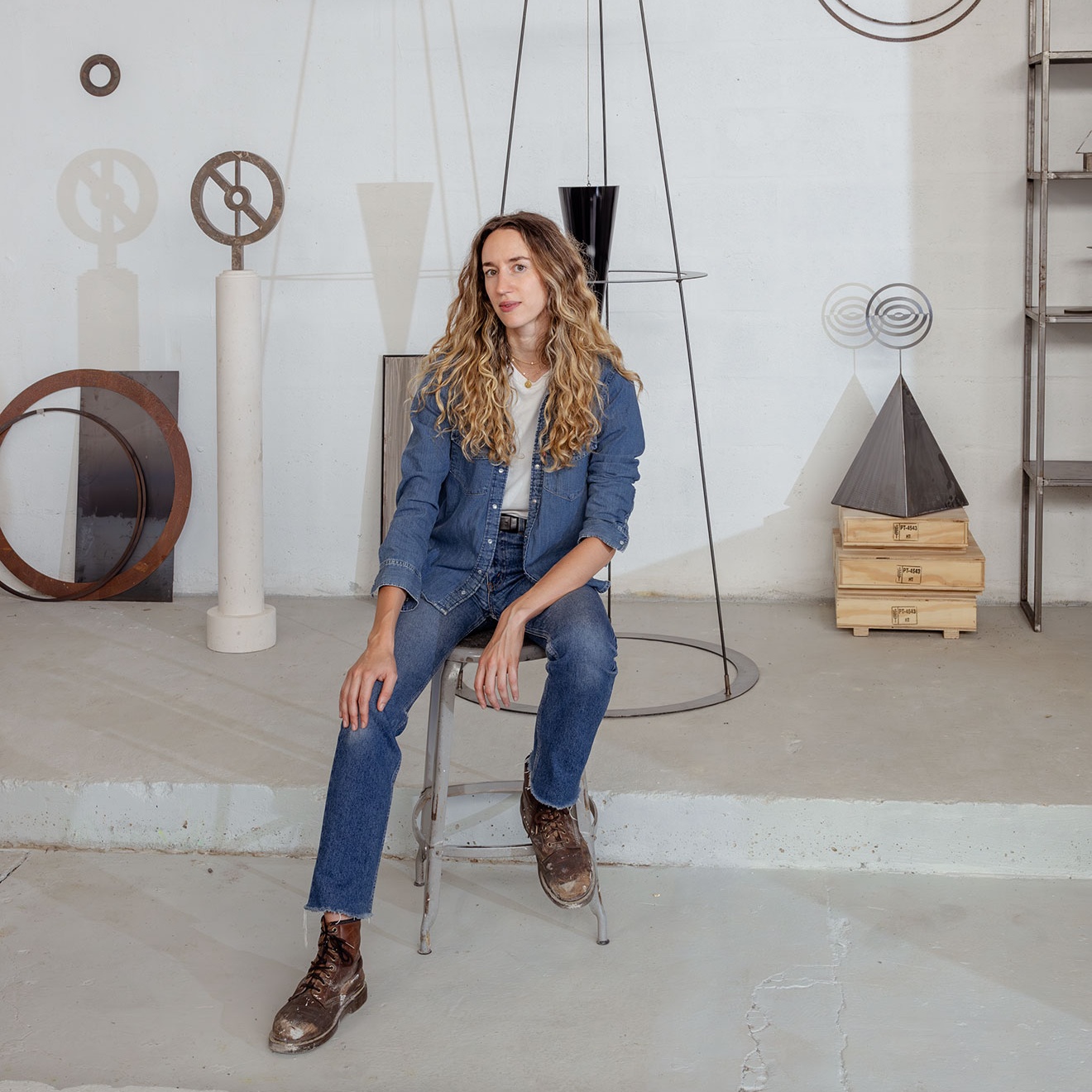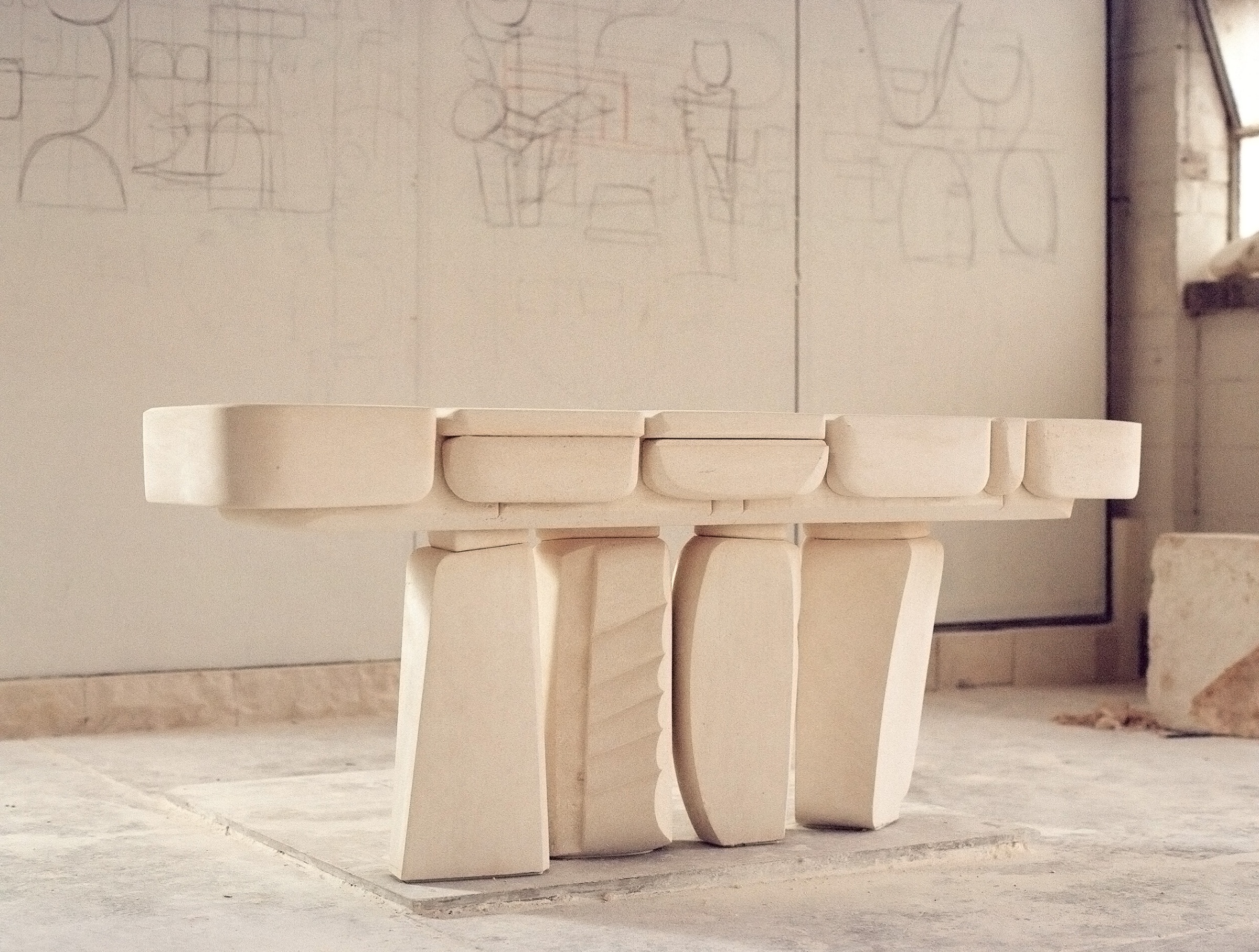Barcelona had seen more rain than usual over the past weeks, making the pine forests to the north of the city green and verdant. They make the 40-minute trip on the commuter train to Rubí a pleasant experience.
Xavier Mañosa, the brains and creative behind the ceramics workshop Apparatu, does the journey every day, using the time to read. Once in Rubí he hops on his bike and heads to the edge of town to work. Outside, the box-shaped headquarters of Apparatu looks like any of the other spit and sawdust industrial workshops you see around town. But once inside, calming jazz music and a cloudy soft filter, caused by the constant sanding of white ceramic objects, fills the air.
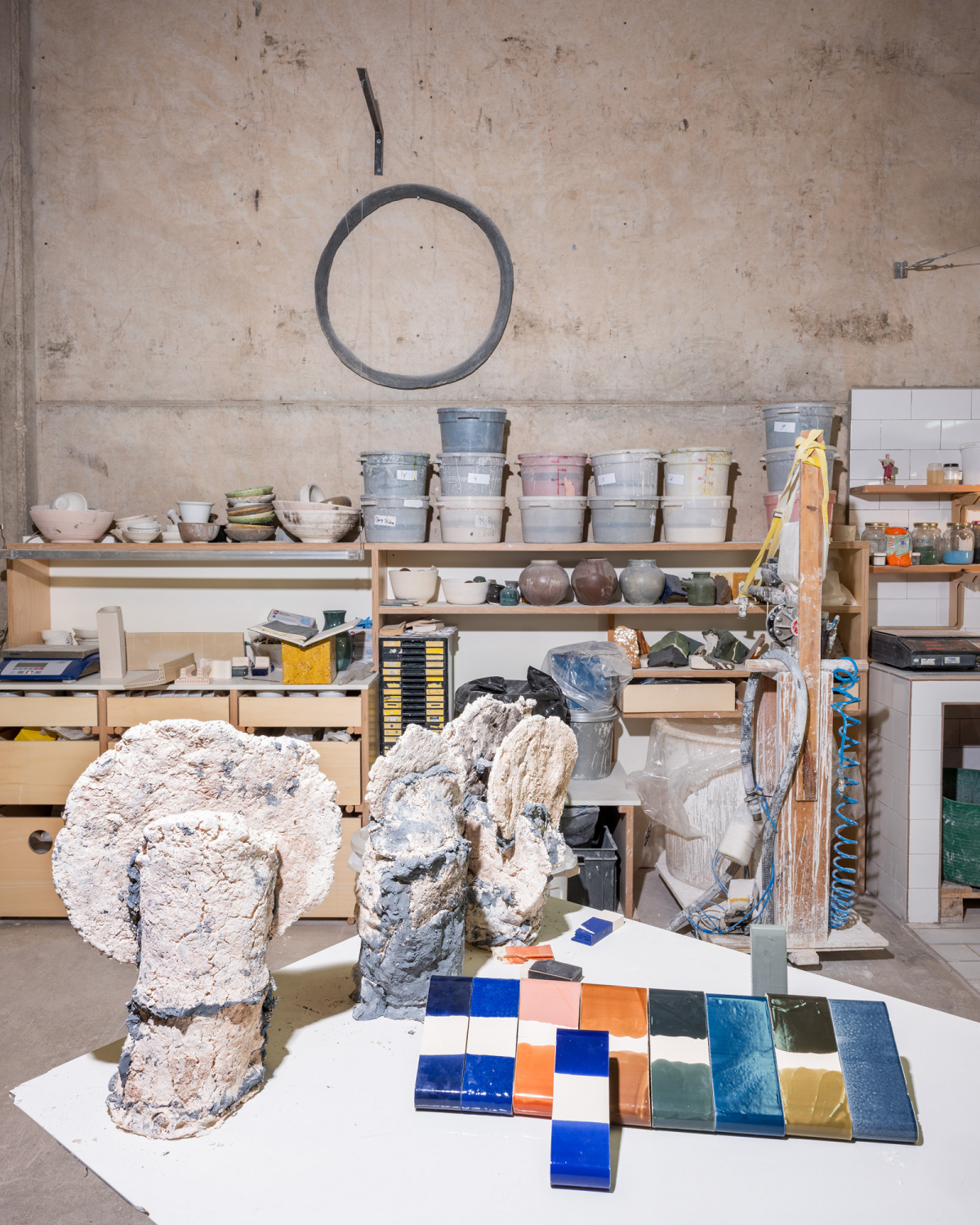
Apparatu started out as a family-run company by another name, making decorative gifts before growing into what the studio is today—known for avant-garde pieces wanted by Hermés, Isabel Marant, and others. Photo by Jara Varelav
Originally called Art Foc, this family-run company started out like hundreds of other pottery makers in Spain—making decorative gifts and for artisan markets and gift shops. In 2010, when the economic downturn hit Spain like a jackhammer, the market for gifts disappeared, and the company was in danger of doing the same.
After studying industrial design at Barcelona’s famed Escola Llotja art school, Xavier wasn’t really considering taking over the helm of the family business. But with the infrastructure and know-how already in place, he saw the potential to steer it into the realm of art and design. Xavier’s parents gave him carte blanche do as he wished, including a name change. Influenced by designers like Hella Jongerius, Apparatu is today known for creating avant-garde pieces for companies like Hermés, Isabel Marant, and the Spanish lighting firm Marset.
Xavier’s father still works in the business. Today he is polishing numerous surreal swordfish sculptures that are destined for a hotel in Costa Rica. Next to them are dozens of Marset’s Pleat Box pendant lamps stacked and ready for the kiln. Resembling a soft fold of fabric, their undersides will be finished with white or 24-karat gold enamel—as glossy as the best gel manicure. The Pleat Box is a favorite with Spain’s stylish boutique hotels and hip restaurants and has become a kind of local design icon with their warm and incredibly flattering glow.
- Apparatu started out as a family-run company by another name, making decorative gifts before growing into what the studio is today—known for avant-garde pieces wanted by Hermés, Isabel Marant, and others. Photo by Jara Varelav
- Photo by Jara Varela
Xavier met me in his office on the upper floor of the mezzanine warehouse-style space. Tall, lanky, and with a mad professor crop of curly hair, he has an infectious laugh and an intellectual, slightly abstract way of talking. He’s just logged off a Zoom call with a representative of Artek, the Finnish furniture makers founded by Alvar Aalto, discussing a commission whose details he is not at liberty to reveal. “I have spent the last five years working on this,” he says. “I have dedicated my body and soul to it. It’s a very complex, very technical project. But Artek have always been my favorite company. So when they asked me to do something, it was like, ‘Wow!’”
Xavier appears to thrive on complexity, which he defines as not being able to find answers anywhere, even from his forbearers. Although Xavier is excited about a new machine he has acquired for creating ceramics with an extrusion technique, he’s mostly upstairs in his office, ideating and solving problems for pieces that have a high level of technical and functional rigor. Tellingly, his office is furnished with the pine-board Sedia 1 chairs by Enzo Mari, a radical predecessor of the self-assembly philosophy.
“I think the part I am most interested in is the pre-project phase,” he says. “The planning and the orchestration. I like to make problems disappear and design the steps needed to make something actually exist.”
- Photo by Jara Varela
- Xavier Mañosa spends his days at the ceramics workshop dreaming up the next big idea. He says the work before the work, or the “pre-project phase,” is the best part. Photo by Jara Varela
He agrees that this sounds more like a skill applied to industrial processes, the discipline he studied, rather than the organic world of craft. “Here we go back to the eternal industrial versus artisanal debate. I love both, and at the end of the day I don’t think there is much difference. It can often just depend on how you define your place of work. The bigger question is, why do you make things?”
That sounds quite romantic, I point out. “Handcraft is very connected to romanticism,” he agrees. “But I am interested in a wider, more contemporary vision, without the emotional baggage handcraft carries.”
So as a design company that uses craft-led processes, where does that leave Apparatu? “What we aren’t is a brand,” says Xavier. “It’s the name of the studio and everything in it; my parents, the workers, it’s a whole world. It’s a hybrid of different things. What I am is the misfit.”
A version of this article originally appeared in Sixtysix Issue 07 with the headline “Apparatu Ceramic Studio.” Subscribe today.
